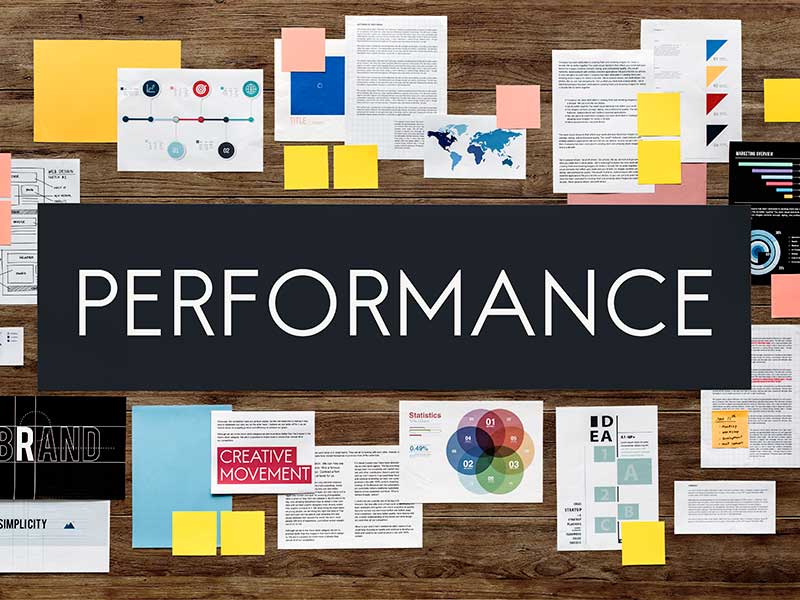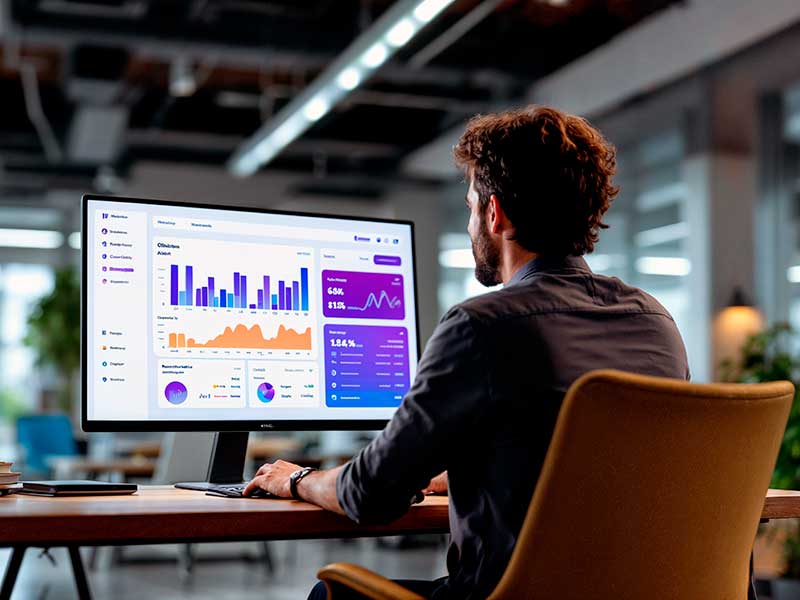SEO has transcended traditional optimization tactics in 2025, evolving into an intricate ecosystem driven by advanced artificial intelligence (AI), highly personalized user experiences, and sophisticated search behaviors.
Technologies like Google’s RankBrain and the Multitask Unified Model (MUM) now deeply understand user intent, delivering results with unprecedented accuracy.
In this rapidly shifting landscape, businesses face a clear choice: adapt swiftly or lose visibility.
Traditional strategies are no longer sufficient—successful SEO now demands a strategic combination of AI-driven insights, exceptional user experiences, and authentic, authoritative content.
This guide unveils the most advanced SEO strategies for thriving in AI-powered search, helping businesses future-proof their visibility, outmaneuver competitors, and dominate search rankings in 2025 and beyond.
Inside, we explore AI-driven search intent modeling, multimodal optimization, structured data strategies, and the latest tools shaping the future of SEO.
Emerging SEO Trends (2025)
I. AI and Advanced Search Algorithms
In 2025, artificial intelligence will dominate SEO as Google’s RankBrain and Multitask Unified Model (MUM) fundamentally reshape search intent analysis and content ranking.
RankBrain refines query interpretation through deep semantic analysis, ensuring more accurate responses to complex and ambiguous searches.
MUM enhances this process by synthesizing information from various sources, languages, and formats—including text, voice, images, and videos—to offer more comprehensive and contextualized results.
Beyond RankBrain and MUM, Google’s AI ecosystem continues to evolve, processing queries dynamically across multiple content formats to refine contextual accuracy.
Google’s AI models now dynamically process search queries across multiple formats, refining contextual accuracy. Businesses must update their strategies to align with modern search behaviors, focusing on multimodal optimization for voice, images, and video. This shift requires prioritizing semantic relationships, AI-driven topic clustering, and structured content to match evolving search engine algorithms.
Additionally, Google’s AI increasingly personalizes search results based on user behavior, entity recognition, and contextual relevance. Businesses must leverage structured data and AI-driven insights to align content with evolving personalization trends, ensuring higher visibility in dynamic search results.
Sites that optimize for voice search, image metadata, and AI-powered knowledge graphs will outperform competitors who cling to outdated tactics, making these strategies essential for staying ahead in the evolving search landscape.
AI-powered SEO tools are becoming critical for achieving top rankings. Platforms such as Surfer SEO, Clearscope, and MarketMuse help businesses optimize content for AI-driven search intent, refining topic depth and semantic relevance.
In 2025, artificial intelligence will dominate SEO as Google’s RankBrain and Multitask Unified Model (MUM) fundamentally reshape search intent analysis and content ranking.
RankBrain refines query interpretation through deep semantic analysis, ensuring more accurate responses to complex and ambiguous searches.
MUM enhances this process by synthesizing information from various sources, languages, and formats—including text, voice, images, and videos
offer more comprehensive and contextualized results.
Beyond RankBrain and MUM, Google’s AI ecosystem continues to evolve, processing queries dynamically across multiple content formats to refine contextual accuracy.
Google’s AI models now dynamically process search queries across multiple formats, refining contextual accuracy. Businesses must update their strategies to align with modern search behaviors, focusing on multimodal optimization for voice, images, and video. This shift requires prioritizing semantic relationships, AI-driven topic clustering, and structured content to match evolving search engine algorithms.
Additionally, Google’s AI increasingly personalizes search results based on user behavior, entity recognition, and contextual relevance. Businesses must leverage structured data and AI-driven insights to align content with evolving personalization trends, ensuring higher visibility in dynamic search results.
Sites that optimize for voice search, image metadata, and AI-powered knowledge graphs will outperform competitors who cling to outdated tactics, making these strategies essential for staying ahead in the evolving search landscape.
AI-powered SEO tools are becoming critical for achieving top rankings. Platforms such as Surfer SEO, Clearscope, and MarketMuse help businesses optimize content for AI-driven search intent, refining topic depth and semantic relevance.
Strategic Recommendations:
-
- Leverage AI-driven keyword clustering tools (ClusterAI, SurgeGraph) to structure content around semantic themes rather than isolated keywords.
- Use predictive analytics (Semrush’s predictive search insights, MarketMuse) to identify emerging user questions and intent-driven content opportunities.
- Implement AI-powered optimization platforms (Surfer SEO, Clearscope, Frase AI) to refine content structure, improve topic depth, and maximize contextual relevance.
- Optimize for multimodal search by integrating structured data, voice-search-optimized content, and AI-enhanced image metadata.
- Utilize AI-powered SEO tools like Clearscope and MarketMuse to ensure content aligns with AI-driven ranking priorities and semantic relevance.
- Adapt content strategies for multimodal search by ensuring voice, image, and video assets are fully optimized for Google’s evolving AI models.
II. UX as a Ranking Factor
In 2025, user Experience (UX) metrics, particularly Google’s Core Web Vitals, have emerged as critical ranking factors. As search engines continue to evolve, UX has become a key component of SEO success, with Google placing significant emphasis on how users interact with and experience websites.
Google prioritizes sites that meet its performance benchmarks: Largest Contentful Paint (LCP) under 2.5 seconds, First Input Delay (FID) under 100ms, and Cumulative Layout Shift (CLS) below 0.1. Failing to
In 2025, user Experience (UX) metrics, particularly Google’s Core Web Vitals, have emerged as critical ranking factors. As search engines continue to evolve, UX has become a key component of SEO success, with Google placing significant emphasis on how users interact with and experience websites.
Google prioritizes sites that meet its performance benchmarks: Largest Contentful Paint (LCP) under 2.5 seconds, First Input Delay (FID) under 100ms, and Cumulative Layout Shift (CLS) below 0.1. Failing to meet these standards can lead to slower loading times, less smooth interactivity, and unstable page structures, all contributing to a poorer browsing experience.
Optimizing these metrics leads to measurable gains in rankings and conversions and significantly improves user engagement. Sites that fail to meet these standards often see increased bounce rates and reduced dwell time, signaling to Google that users are dissatisfied. Regularly monitoring and refining UX elements using tools like Google Lighthouse and PageSpeed Insights is a key strategy for businesses to enhance user engagement, stay competitive in search rankings, and improve overall site performance.
Additionally, Google’s AI models, such as RankBrain and MUM, now assess UX holistically, rewarding sites that prioritize seamless navigation, content engagement, and mobile-first experiences.
Integrating AI-driven search means that Google’s algorithms increasingly favor websites that provide intuitive, structured, and engaging interactions across all devices. Ensuring a positive UX isn’t just about speed—it’s about delivering a frictionless and engaging journey that aligns with user expectations.
meet these standards can lead to slower loading times, less smooth interactivity, and unstable page structures, all contributing to a poorer browsing experience.
Optimizing these metrics leads to measurable gains in rankings and conversions and significantly improves user engagement. Sites that fail to meet these standards often see increased bounce rates and reduced dwell time, signaling to Google that users are dissatisfied. Regularly monitoring and refining UX elements using tools like Google Lighthouse and PageSpeed Insights is a key strategy for businesses to enhance user engagement, stay competitive in search rankings, and improve overall site performance.
Additionally, Google’s AI models, such as RankBrain and MUM, now assess UX holistically, rewarding sites that prioritize seamless navigation, content engagement, and mobile-first experiences.
Integrating AI-driven search means that Google’s algorithms increasingly favor websites that provide intuitive, structured, and engaging interactions across all devices. Ensuring a positive UX isn’t just about speed—it’s about delivering a frictionless and engaging journey that aligns with user expectations.
Strategic Recommendations
-
- Implement Progressive Web Apps (PWAs): Enhance speed, engagement, and offline functionality for mobile users.
- Leverage Content Delivery Networks (CDNs): Reduce latency and improve global site speed.
- Optimize caching strategies: Implement server-side caching, lazy loading, and compressed assets for faster performance.
- Monitor user behavior regularly: Use heatmap tools (Hotjar, Crazy Egg) and Google Lighthouse to identify and resolve UX pain points proactively.
- Utilize real-user monitoring (RUM) tools: Track live UX performance with SpeedCurve or New Relic to gain actionable insights from real user sessions.
III. Voice and Visual Search Optimization
As voice assistants (Alexa, Siri, Google Assistant) and visual search tools (Google Lens, Pinterest Lens) continue shaping user behavior, businesses must evolve beyond traditional SEO strategies.
Users now expect fast, accurate, and personalized responses, whether they search through speech, images, or text, making adaptability to these platforms essential for maintaining visibility.
With Google’s MUM integrating multimodal content analysis, search engines process voice, image, and text
As voice assistants (Alexa, Siri, Google Assistant) and visual search tools (Google Lens, Pinterest Lens) continue shaping user behavior, businesses must evolve beyond traditional SEO strategies.
Users now expect fast, accurate, and personalized responses, whether they search through speech, images, or text, making adaptability to these platforms essential for maintaining visibility.
With Google’s MUM integrating multimodal content analysis, search engines process voice, image, and text queries interchangeably, making conversational and visual optimization more critical than ever.
Websites must focus on structured data, rich metadata, and AI-driven content enhancements to remain competitive.
Additionally, voice search optimization requires a deeper understanding of natural language processing (NLP), question-based queries, and featured snippet placements, while visual search optimization demands high-quality, contextually relevant images, alt text, and schema markup tailored to image search engines.
Voice search queries differ significantly from traditional text-based searches. Users tend to phrase voice searches as complete questions, such as “What’s the best laptop for gaming?” rather than simply typing “best gaming laptop.” This shift requires businesses to structure content conversationally, ensuring that answers are formatted concisely and optimized for direct, spoken responses in search results.
queries interchangeably, making conversational and visual optimization more critical than ever.
Websites must focus on structured data, rich metadata, and AI-driven content enhancements to remain competitive.
Additionally, voice search optimization requires a deeper understanding of natural language processing (NLP), question-based queries, and featured snippet placements, while visual search optimization demands high-quality, contextually relevant images, alt text, and schema markup tailored to image search engines.
Voice search queries differ significantly from traditional text-based searches. Users tend to phrase voice searches as complete questions, such as “What’s the best laptop for gaming?” rather than simply typing “best gaming laptop.” This shift requires businesses to structure content conversationally, ensuring that answers are formatted concisely and optimized for direct, spoken responses in search results.
Strategic Recommendations:
-
- Optimize FAQs and conversational content: Implement structured data (FAQPage schema) to enhance visibility in voice search results and zero-click snippets.
- Leverage NLP for voice-friendly content: Use tools like Frase, Surfer SEO, and Google’s NLP API to create content that aligns with natural language queries.
- Optimize images for visual search: Add structured data (schema.org/ImageObject), descriptive filenames, and high-quality, properly compressed images.
- Audit and enhance visual search readiness: Regularly analyze image discoverability in Google Image Search Console and Google Lens to ensure proper indexing.
- Use AI-driven tools for visual search optimization: Utilize Google Vision AI to analyze image relevance and Cloudinary to automate image compression and optimization without quality loss.
IV. Mobile First Indexing
With over 60% of global traffic now originating from mobile devices, mobile-first indexing remains a foundational SEO priority.
As users increasingly rely on mobile search, Google continuously refines its algorithms to reward websites that deliver seamless, fast, and highly responsive mobile experiences.
Google prioritizes mobile-friendly, high-performing websites, and those failing to meet Core Web Vitals benchmarks (LCP < 2.5s, FID < 100ms, CLS < 0.1) risk
ranking declines. In addition to speed and stability, factors such as intuitive navigation, touch-friendly UI elements, and mobile accessibility compliance (WCAG) now play a role in mobile rankings.
Moreover, mobile-first indexing impacts structured data and metadata, requiring sites to ensure that mobile versions retain the same schema markup and meta information as their desktop counterparts.
Optimizing for seamless mobile UX ensures higher engagement, lower bounce rates, and better conversions.
Mobile users interact differently than desktop users, favoring quick-access information and concise, scannable content.
Implementing collapsible sections (accordion UI) for FAQs and long-form content enhances mobile readability while improving search visibility.
Websites should leverage responsive design frameworks, optimize for Core Web Vitals, and conduct regular mobile usability tests using tools like Google’s Mobile-Friendly Test and Lighthouse.
Focusing on site speed, mobile accessibility, and seamless user experience is now the best approach for mobile SEO.
By continuously refining mobile performance, websites can maintain strong search visibility and deliver a frictionless browsing experience tailored to modern user expectations.
Strategic Recommendations
-
- Optimize for Core Web Vitals: Ensure mobile pages load within LCP <2.5s, interactivity is fast (FID <100ms), and page stability is maintained (CLS <0.1).
- Enhance mobile site speed: Use lazy loading, server-side rendering (SSR), and image compression instead of relying solely on AMP.
- Run regular mobile UX audits: Utilize Google’s Mobile-Friendly Test, Lighthouse, and Search Console reports to identify performance bottlenecks.
- Improve mobile navigation: Implement a touch-friendly UI, ensure proper viewport scaling, and simplify site navigation to minimize friction and reduce bounce rates.
- Ensure mobile-first content parity: Verify that structured data, meta descriptions, and schema markup are identical between mobile and desktop versions to avoid ranking discrepancies.
- Leverage mobile performance tools: Use Cloudflare for mobile caching, WebPageTest for real-user performance tracking, and Google’s Page Experience Report for ongoing compliance monitoring.
V. Zero-Click Results and Google’s SGE (Search Generative Experience)
As Google’s Search Generative Experience (SGE) transforms search, AI-driven summaries and zero-click results increasingly dominate SERPs.
This shift reduces traditional organic click-through rates, making it essential for businesses to optimize for featured snippets, knowledge panels, and AI-generated overviews to maintain visibility and authority.
With SGE providing direct answers from multiple sources, businesses must adopt structured content strategies that align with Google’s AI-driven ranking
priorities. Implementing FAQ schema, using clear heading structures, and crafting content that directly addresses common user queries can increase the likelihood of being featured in AI-generated overviews.
Additionally, content creators should focus on producing highly authoritative, well-cited material, as Google’s AI tends to favor sources with strong domain credibility.
As users increasingly engage with AI-driven search results, their behavior is shifting. Many now rely on AI-generated overviews rather than clicking on traditional links for quick answers. This makes it essential for businesses to optimize for engagement beyond clicks, such as through brand recognition, trust-building, and AI-friendly content structuring.
Companies that prioritize content that AI easily references will benefit from increased visibility even when direct traffic is reduced.
Another key factor is enhancing engagement through interactive content. Optimizing for zero-click results doesn’t just mean ranking in snippets—it also involves encouraging deeper user interaction. Businesses should integrate calls-to-action within their content, leverage internal linking strategies, and monitor performance via Google Search Console to assess AI-generated visibility trends.
As Google’s AI-driven ranking increasingly favors recognized entities rather than just keyword-optimized content, businesses must focus on entity optimization. This involves improving structured data, securing citations in authoritative sources like Wikipedia, and optimizing Google’s Knowledge Graph to establish a stronger brand presence in AI-curated search results.
As the search landscape shifts toward AI-curated results, proactively adapting content strategies will be critical for maintaining traffic and authority.
Strategic Recommendations
-
- Optimize for multiple SERP features: In addition to featured snippets, structure content for People Also Ask (PAA), passage indexing and knowledge panels to maximize search presence.
- Format content for AI consumption: Use concise bullet lists, tables, and Q&A formats to improve AI summarization accuracy.
- Leverage AI-driven SEO tools: Platforms like Surfer SEO, MarketMuse, and Clearscope help align content with AI-generated results and intent-driven search queries.
- Monitor AI-generated visibility metrics: Use Google Search Console insights and third-party tracking tools to assess the impact of zero-click results on organic traffic.
- Focus on entity optimization: Improve structured data, secure citations in authoritative sources, and optimize for Google’s Knowledge Graph to strengthen AI-driven search presence.
Advanced Content Strategies for SEO (2025)
I. Unique Value in the AI Era
In 2025, businesses must differentiate their content clearly from generic AI outputs by prioritizing authenticity, depth, and proprietary insights. This means incorporating firsthand experiences, expert opinions, and original research to establish credibility and authority.
By incorporating real-world data, case studies, and expert analysis—elements that AI-generated content struggles to replicate—businesses can strengthen their credibility. Search engines increasingly prioritize this
depth of content, ensuring greater visibility and authority.
With the rise of AI-generated content, search engines increasingly reward unique, human-authored resources that deliver genuine value and expertise. Businesses should focus on crafting well-structured, engaging narratives that address user intent comprehensively. Additionally, integrating multimedia elements like videos, infographics, and interactive tools can further enrich content, making it more valuable and engaging for audiences while boosting search visibility.
Strategic Recommendations
-
- Incorporate proprietary data, original research, or industry-specific insights to distinguish your content clearly from competitors.
- Regularly audit content for originality using tools such as Copyscape or Originality.ai.
- Clearly highlight author credentials, leveraging Google’s N-E-E-A-T principles (Experience, Expertise, Authoritativeness, Trustworthiness).
II. Multimodal and Interactive Content
In 2025, successful content strategies require a multimodal and interactive approach that aligns with evolving user preferences and search behaviors.
Users now expect visual, audio, and interactive experiences tailored to their needs.
Video content, podcasts, and augmented reality (AR) applications are increasingly integrated into search results, making it crucial for businesses to diversify their content strategy.
Google’s AI, including MUM, processes multimodal content—text, images, audio, and video—together. Optimizing content for these interactions ensures better visibility across AI-driven search environments.
Interactive elements like quizzes, polls, AI-powered chat experiences, and live-streaming events enhance engagement, providing personalized and dynamic user interactions. Gamification techniques, such as interactive storytelling, leaderboards, and rewards systems, further boost engagement and encourage repeat visits.
As content consumption habits shift, brands that adopt a seamless, cross-platform approach will stand out in an AI-driven search landscape. Companies that leverage adaptive content—where messaging and format adjust dynamically based on user preferences, location, and behavior—will have a competitive edge. Ensuring accessibility across multiple devices, including smart assistants and wearables, will also be essential in optimizing reach and engagement.
Strategic Recommendations:
-
-
Create video tutorials, podcasts, or webinars hosted on platforms like YouTube, Spotify, or industry-specific channels.
-
Employ interactive elements such as quizzes, calculators, or infographics using platforms like Canva or Outgrow.
-
Ensure all multimedia content is optimized with accurate metadata, alt text, captions, and structured data (schema markup) for enhanced discoverability across visual and voice search channels. Leverage AI-powered tools like Descript for automated podcast & video editing and Vyond for AI-driven animated content to scale multimodal engagement.
-
III. Content Authenticity and Google’s N-E-E-A-T Principles
Google’s expanded N-E-E-A-T principles—Experience, Expertise, Authoritativeness, and Trustworthiness—require demonstrable credibility and authenticity.
Content created by authoritative authors consistently achieves higher rankings as search engines increasingly prioritize well-researched, fact-based material that showcases real-world experience.
This means businesses must go beyond generic content and create resources backed by industry knowledge, in-depth analysis, and practical application.
To align with these principles, businesses should ensure their content includes expert contributions, detailed citations, and transparent sourcing.
Additionally, providing author bios, linking to verifiable credentials, and incorporating first-hand insights can further establish credibility and improve visibility in search results.
Beyond structured data enhancements like Author Schema and Fact-Check Schema, content credibility also hinges on proactive industry engagement.
Businesses should not only optimize for algorithmic credibility but also establish authority through high-quality thought leadership—leveraging interviews, whitepapers, and original research to reinforce trust with their audience.
Strategic Recommendations
-
- Showcase clear author credentials, biographies, and qualifications prominently.
- Cite credible, authoritative sources, and maintain consistent, accurate referencing.
- Contribute regularly to authoritative industry platforms to build credibility and backlinks.
- Engage in guest posting on high-authority sites to expand reach and strengthen backlink profiles.
- Host or participate in expert roundtables, webinars, or panels to showcase thought leadership and boost content trust signals.
IV. User-Generated Content (UGC): Building Trust and Authority
Authentic user-generated content (UGC) continues to be a powerful signal for trustworthiness, authority, and community engagement, significantly boosting SEO effectiveness.
In 2025, search engines increasingly prioritize content that demonstrates real-world user interactions, making UGC an essential element in building brand credibility and improving organic rankings.
Encouraging user participation through reviews, testimonials, social media interactions, and discussion
forums can enhance engagement and foster a sense of community around a brand.
Additionally, integrating UGC into product pages, blog posts, and multimedia content can improve search visibility by providing fresh, relevant, and naturally optimized content that aligns with user intent.
To maximize the SEO benefits of UGC, brands should implement strategies to moderate and curate high-quality contributions.
Ensuring that user-submitted content is well-structured, keyword-rich, and aligned with E-E-A-T (Experience, Expertise, Authoritativeness, Trustworthiness) principles can further boost its effectiveness.
Leveraging AI-powered moderation tools can help filter spam while maintaining genuine user interactions.
Strategic Recommendations
-
- Encourage customer reviews and ratings on product pages to enhance credibility and increase conversion rates.
- Feature user-submitted photos and videos to create an authentic, community-driven experience.
- Utilize social proof by displaying real-time customer feedback and testimonials across marketing channels.
- Build engagement-driven forums and Q&A sections to foster discussions and boost long-tail keyword rankings.
- Optimize UGC with structured data markup to improve its discoverability in search results.
- Implement AI moderation tools to maintain content quality while filtering out spam or irrelevant contributions.
- Reward active contributors through recognition programs, contests, or exclusive access to content, further incentivizing participation.
Businesses can strengthen their online presence by effectively harnessing user-generated content, building deeper relationships with their audience, and enhancing their authority in an increasingly competitive digital landscape.
Advanced Keyword Research Techniques
I. Keyword Clustering and Semantic SEO
In 2025, semantic SEO and keyword clustering are essential to achieving higher rankings, enhanced topical authority, and superior content relevance.
Semantic clustering moves beyond targeting isolated keywords to optimizing entire topic areas, aligning precisely with evolving AI-driven search algorithms.
By leveraging keyword clustering, businesses can create interconnected content ecosystems that improve internal linking structures and enhance content discoverability.
AI-powered clustering tools analyze keyword relationships, user intent patterns, and search trends in real-time, allowing businesses to adapt their content dynamically.
Implementing these insights ensures that keyword clusters remain relevant even as search behaviors evolve.
AI-powered tools such as Surfer SEO, Clearscope, and MarketMuse can analyze vast amounts of search data to determine semantic relationships between topics and identify content gaps. This approach ensures that every piece of content supports broader thematic relevance, allowing search engines to recognize the depth of a site’s expertise.
Additionally, optimizing content for latent semantic indexing (LSI) ensures that related terms and contextually relevant keywords are naturally incorporated, strengthening the association between search intent and published material.
By structuring content around pillar pages and supporting topic clusters, businesses can ensure semantic depth and intent matching. This approach strengthens AI recognition, improves internal linking, and reinforces the topical authority of a site.
Businesses can dominate entire keyword landscapes by structuring content around pillar pages and supporting topic clusters rather than relying on individual terms. This strategy enhances organic visibility and improves user engagement by providing comprehensive, well-organized information tailored to various customer journey stages.
How to Apply the Keyword Clustering Method:
1. Collect Primary Keywords:
-
- Begin by gathering broad primary keywords from tools like Google Keyword Planner, Ahrefs, or Semrush.
- Identify primary, secondary, and tertiary terms reflecting varied user intents.
- Group keywords into thematic clusters based on semantic similarity, user intent, and search volume.
2. Map Clusters to Pillar Pages and Content Hubs:
-
- Develop authoritative pillar pages that comprehensively address central topics.
- Create interlinked, supporting cluster content that dives deeply into related subtopics.
3. Monitor and Optimize Regularly:
-
- Periodically analyze content performance, refining clusters based on user engagement and evolving search trends.
- Use tools like Google Search Console to measure user interactions, adapting clusters based on performance analytics.
II. Cutting-Edge Keyword Research Tools for 2025
Advanced SEOs use sophisticated tools to pinpoint keyword opportunities, optimize content strategy, and achieve superior rankings.
These tools provide search volume and keyword difficulty metrics and analyze search intent, competitor performance, and emerging trends.
AI-powered platforms such as Ahrefs, Semrush, and Surfer SEO integrate machine learning to refine keyword clustering, identify long-tail opportunities, and predict shifts in search behavior.
Additionally, advanced keyword research tools now incorporate real-time SERP analysis, helping SEOs adapt their content strategies to Google’s latest algorithm updates.
With AI-driven keyword research becoming the standard, selecting the right tools is crucial.
Features like predictive analytics and automated topic clustering allow for more precise targeting, ensuring content remains relevant and competitive.
By leveraging real-time SERP tracking, SEOs can adjust content strategies dynamically, responding to ranking fluctuations and competitor movements.
Advanced tools now offer automated alerts and trend analysis, ensuring data-driven decision-making in competitive search environments.
By leveraging these technologies, SEO professionals can refine their keyword selection, enhance topical authority, and maintain a strategic edge in an AI-driven search landscape.
The following platforms provide SEOs with advanced capabilities to refine keyword selection, optimize content, and track SERP shifts in real time.
Detailed SEO Keyword Tool Recommendations
1. Ahrefs
-
- Use Case: Ideal for comprehensive keyword audits, competitive analysis, and backlink insights.
- Advanced Tip: Leverage Ahrefs’ Keyword Explorer to identify untapped content gaps competitors miss and regularly monitor SERP movement to proactively adjust your strategy.
2. Wordtracker
-
- Use Case: A powerful AI-driven tool for discovering high-performing keywords with lower competition. Wordtracker’s AI-driven algorithm analyzes real-time search trends, competitor gaps, and long-tail opportunities, making it an effective solution for uncovering niche markets and untapped keyword clusters.
- Advanced Tip: Use Wordtracker’s intent-based keyword suggestions to uncover search queries with high commercial value and optimize content for conversion-driven results.
3. Semrush
-
- Use Case: Excellent for in-depth keyword clustering, intent analysis, and identifying emerging trends.
- Advanced Tip: Use Semrush’s Keyword Magic Tool to detect semantic groupings, which will allow you to create pillar-cluster strategies efficiently.
4. Surfer SEO
-
- Use Case: Best for AI-driven content optimization, identifying ideal keyword density, and topical relevance.
- Advanced Tip: Integrate Surfer’s Content Editor with Google Docs for real-time optimization, ensuring content perfectly aligns with high-ranking competitor analysis.
5. Keywords Everywhere
- Use Case: Effective for real-time keyword ideation and competitive benchmarking directly within search results.
- Advanced Tip: Leverage this browser extension to quickly validate keyword opportunities during real-time searches on Google, Amazon, and YouTube.
III. Intent Based Keyword Optimization
Search engines in 2025 prioritize content explicitly tailored to user intent—informational, transactional, or navigational.
Identifying and satisfying search intent is now foundational for SEO success, as algorithms continuously evolve to deliver highly relevant and contextually accurate search results.
To stay competitive, businesses must go beyond keyword matching and analyze user behavior, query patterns, and engagement signals.
Content must be structured to directly address the specific needs of users at different stages of the search journey, whether they are seeking information, comparing options, or ready to take action.
Businesses can dynamically refine content strategies by integrating AI-driven tools for search intent analysis.
These tools provide deep insights into user behaviors, enabling real-time adjustments to content that align with evolving search trends.
The following recommendations offer practical steps to align content with evolving user behaviors and search intent trends. This strategic approach improves rankings and enhances user satisfaction, increasing conversions and brand authority.
Strategic Recommendations
-
-
Conduct intent audits regularly using Google Search Console to identify which intent categories dominate your traffic.
-
Create dedicated content types for specific intents:
-
Informational: Detailed guides, comprehensive FAQs, and educational resources.
-
Transactional: Targeted landing pages, optimized product descriptions, and clear calls-to-action.
-
Use FAQ schema for informational content, Product schema for transactional pages, and Breadcrumb schema for navigational optimization. These structured data implementations improve rich snippet eligibility and ensure content aligns with AI-driven search intent signals, maximizing visibility and engagement.
-
IV. Localized and Conversational Keywords
With increased reliance on voice search and localization, optimizing for conversational and region-specific queries has become essential.
Users now expect precise, location-aware, and natural conversational answers tailored to their immediate context and specific regional needs.
Businesses must focus on identifying long-tail conversational phrases and queries frequently used by their local target audience.
Utilizing natural language processing (NLP) tools can help uncover common questions, phrasing, and dialects specific to a region, enabling content creators to match the exact language used by local searchers.
Additionally, maintaining an updated Google Business Profile with accurate location information, business hours, customer reviews, and locally relevant content can significantly enhance visibility in “near me” searches.
Integrate LocalBusiness schema to signal geographic relevance to search engines.
Regularly track localized search performance with Google Search Console and AI-driven keyword tools for optimization.
Ultimately, businesses that successfully optimize for both conversational voice searches and localized content will achieve higher rankings, increased visibility, and improved engagement within their target markets.
Strategic Recommendations
-
-
Identify natural language queries using platforms like AnswerThePublic and integrate these into FAQs and content headings to align with voice search.
-
Regularly audit Google Business Profile performance, focusing on localized keyword insights, reviews, and user interactions.
-
Use location-aware keyword research tools (BrightLocal, Yext) to uncover hyper-local terms for targeted optimization.
-
Conduct semantic keyword audits quarterly with Ahrefs and Semrush, updating clusters based on emerging trends, user intent, and competitor analysis.
-
Regularly update keyword clusters based on emerging trends, user intent, and competitor analysis.
-
Use intent-focused structured data markup for critical pages.
-
Create robust pillar-cluster structures around identified keyword groupings.
-
Use AI tools like Surfer SEO and ClusterAI to identify overlooked conversational and hyper-local keyword opportunities.
-
Optimize content specifically for conversational, voice-driven queries using tools like Frase or AnswerThePublic.
-
Maintain comprehensive local keyword strategies to dominate regional searches.
-
By employing these advanced keyword research and clustering methods, expert SEOs can ensure high relevance, topical authority, and sustained visibility in the increasingly competitive digital environment of 2025.
Technical SEO Essentials (2025)
I. Core Web Vitals and UX Optimization
Google’s emphasis on Core Web Vitals—largest Contentful Paint (LCP), First Input Delay (FID), and Cumulative Layout Shift (CLS)—is foundational to high-ranking websites in 2025.
These metrics serve as critical indicators of page speed, responsiveness, and stability, directly influencing user satisfaction and search engine rankings.
A well-optimized website ensures faster load times, reducing bounce rates and keeping visitors engaged.
Google prioritizes sites that deliver seamless interactions, rewarding those that enhance accessibility, intuitive navigation, and mobile responsiveness.
Google’s mobile-first indexing prioritizes fast, responsive pages. Ensure mobile UX is optimized by reducing FID delays, improving LCP on mobile networks, and preventing CLS shifts across different screen sizes.
In 2025, AI-driven UX optimization tools and real-time performance monitoring play an essential role in identifying and resolving performance bottlenecks before they impact rankings.
Businesses must go beyond basic compliance with Core Web Vitals and proactively optimize for user engagement by leveraging lazy loading, preloading assets, and reducing render-blocking elements.
They must also implement adaptive design to ensure content remains visually stable and consistent across devices, reinforcing trust and usability.
With Google’s evolving ranking algorithms, delivering an exceptional user experience is no longer optional—it’s a requirement for sustained organic visibility and conversion success.
Strategic Recommendations
-
-
Largest Contentful Paint (LCP): Optimize images, implement lazy-loading, and reduce server response times (ideal LCP < 2.5 seconds).
-
First Input Delay (FID): Minimize JavaScript execution and prioritize efficient code delivery (ideal FID < 100 ms).
-
Cumulative Layout Shift (CLS): Use fixed dimensions for visual elements and avoid dynamic content shifts (target CLS < 0.1).
-
Monitor and optimize continuously with tools like Google Lighthouse (for real-time performance audits), GTmetrix (for detailed speed analysis), and WebPagetest (for in-depth waterfall breakdowns of loading behavior).
-
II. Structured Data and Rich Snippets
Structured data (schema markup) remains essential for capturing premium SERP placements, featured snippets, voice responses, and enhanced visibility through rich results.
By leveraging schema markup effectively, businesses can improve search engines’ understanding of their content, leading to higher engagement and improved click-through rates.
Implementing structured data for various content types, such as FAQ, How-To, Product, Review,
Organization, Article, and Breadcrumb schema, enhances contextual relevance and provides a more dynamic search presentation.
These additional schema types further improve search visibility, reinforce business credibility, and enhance internal linking for better navigation.
Additionally, integrating JSON-LD structured data ensures compatibility with Google’s evolving AI-driven search capabilities, maximizing the chances of appearing in knowledge panels and other interactive SERP features.
Strategic Recommendations
-
- Implement schema markup for FAQs, product reviews, events, FAQs, and video content.
- Regularly validate structured data with Google Rich Results Test and schema validators.
- Utilize schema generators (Schema App, JSON-LD generators) to efficiently produce markup at scale.
- Optimize for voice search by implementing a Speakable schema, which allows Google Assistant and other AI-driven services to extract relevant spoken responses. Additionally, structure the FAQ schema with concise, conversational answers to enhance visibility in voice search and AI-generated results.
III. Site Audits & Error Management
Technical errors negatively impact crawl efficiency, rankings, and UX, leading to decreased search visibility and a poor user experience.
Issues such as broken links, duplicate content, slow server response times, and improper indexing directives can prevent search engines from properly crawling and ranking a site.
Proactively identifying and resolving these technical SEO issues is vital for sustained SEO success.
Regular site audits using tools like Google Search Console, Screaming Frog, and Ahrefs can help detect crawl errors, missing meta tags, and schema markup issues.
Implementing structured troubleshooting workflows, addressing server errors, and optimizing site architecture ensure long-term crawlability and search performance.
By maintaining a technically sound website, businesses can enhance user engagement, improve indexation rates, and secure higher search rankings.
Strategic Recommendations
To improve readability and organization, the following recommendations are grouped into distinct categories:
Critical Fixes:
-
-
Implement 301 redirects for all broken or outdated URLs, ensuring minimal link-equity loss.
-
Eliminate duplicate content and fix canonicalization errors to prevent indexation issues.
-
Address server response delays to enhance crawl efficiency and reduce page load times.
-
AI-Powered Monitoring:
-
-
Utilize AI-driven SEO tools like Botify and ContentKing for real-time audit alerts and automated fixes.
-
Leverage predictive analysis from DeepCrawl to identify potential indexing issues before they affect rankings.
-
Manual SEO Audits:
-
-
Run quarterly comprehensive audits using tools like Ahrefs Site Audit, Screaming Frog, and DeepCrawl.
-
Continuously monitor critical errors (404s, broken links, duplicate content, canonical tags) via Google Search Console.
-
Run quarterly comprehensive audits using tools like Ahrefs Site Audit, Screaming Frog, and DeepCrawl.
-
Continuously monitor critical errors (404s, broken links, duplicate content, canonical tags) via Google Search Console.
-
Implement 301 redirects for all broken or outdated URLs, ensuring minimal link-equity loss.
-
Maintain robust internal linking strategies for optimal crawlability and indexing efficiency.
-
IV. AI-Assisted Technical SEO
AI-driven tools now streamline audits, optimize crawl budgets, and offer predictive insights for technical SEO improvements.
These tools leverage machine learning to detect anomalies, automate issue resolution, and enhance site architecture analysis with minimal manual intervention.
AI-powered platforms like Botify, DeepCrawl, and ContentKing provide real-time monitoring, ensuring that technical SEO errors are identified and corrected
before they impact rankings. AI-powered predictive analysis provides early detection of ranking fluctuations, algorithm shifts, and potential site issues.
These insights allow businesses to take proactive measures before search visibility declines. Once issues are detected, AI-driven automation streamlines the process of fixing errors, optimizing site performance, and ensuring continuous compliance with Google’s evolving ranking factors.
Additionally, AI assists in log file analysis, identifying inefficient crawl paths, duplicate content issues, and potential site structure optimizations.
Embracing AI in technical SEO increases accuracy, efficiency, and scalability, allowing businesses to proactively maintain site health while adapting to ever-evolving search algorithms.
Strategic Recommendations
-
- Utilize AI crawling tools (DeepCrawl, Botify) to efficiently identify critical SEO issues and prioritize optimizations.
- Deploy predictive analytics to forecast the SEO impact of changes, guiding proactive strategy adjustments.
- Leverage AI-powered analytics tools for automatic detection of duplicate content, crawl inefficiencies, and optimization opportunities, saving valuable time and resources.
AI SEO Tools
-
- Botify: Automates site audits and enhances crawl efficiency.
- ContentKing: Provides real-time SEO tracking and alerting for technical issues.
- MarketMuse: Uses AI to optimize content structure and semantic relevance.
- Screaming Frog with Machine Learning Integration: AI-enhanced log file analysis and automated site audits.
V. Mobile and Accessibility Compliance
In 2025, full mobile optimization and accessibility compliance will be more than best practices—they’ll be mandatory.
Google increasingly rewards mobile-friendly and accessible websites with higher visibility, engagement, and improved user retention.
With the majority of global web traffic coming from mobile devices, ensuring a seamless experience across different screen sizes, devices, and network conditions is crucial.
Accessibility compliance is equally essential, as search engines prioritize websites that adhere to WCAG (Web Content Accessibility Guidelines) standards.
Features such as proper contrast ratios, screen reader compatibility, and intuitive navigation structures enhance usability for all users, including those with disabilities.
Additionally, implementing structured data optimized for mobile and accessibility improves search rankings and ensures content is correctly indexed and presented in voice and AI-driven search results.
Websites that fail to meet mobile and accessibility standards risk lower rankings, higher bounce rates, and reduced conversions.
To stay competitive, businesses must integrate responsive design, optimize for fast load times, and regularly audit accessibility features using tools like Google Lighthouse and WAVE (Web Accessibility Evaluation Tool).
Strategic Recommendations
Mobile Usability Optimization:
-
- Validate responsiveness across all major devices using Google’s Mobile-Friendly Test.
- Optimize images and videos for faster mobile loading speeds.
- Use touch-friendly navigation elements with large tappable areas.
- Reduce intrusive pop-ups that hinder mobile browsing.
Accessibility Compliance:
-
- Implement ARIA (Accessible Rich Internet Applications) attributes for screen readers.
- Ensure that the color contrast meets WCAG 2.1 guidelines for readability.
- Use descriptive alt text for images and proper heading structures.
- Test with accessibility evaluation tools like WAVE and Axe.
- Leverage AI-powered accessibility testing tools like Axe, Lighthouse, and WAVE to identify compliance gaps and streamline optimization.
- Fully implement Accelerated Mobile Pages (AMP) selectively for critical high-traffic pages.
By applying these comprehensive and advanced technical SEO practices, businesses can maintain superior search performance, proactively adapt to algorithmic shifts, and consistently deliver exceptional user experiences throughout 2025 and beyond.
Measuring SEO Success in 2025
I. Advanced SEO Metrics: Beyond Rankings and Traffic
In 2025, measuring SEO success has evolved significantly. Traditional metrics like rankings and organic traffic remain valuable, but they no longer provide a complete picture of performance.
Advanced metrics tied to user experience (UX), engagement, and business impact have become critical for accurately assessing SEO effectiveness and long-term sustainability.
Search engines now prioritize user-centric signals such as dwell time, scroll depth, and return visitor rates as
indicators of content value and relevance. Tools like Hotjar, Crazy Egg, and Google Tag Manager can provide precise insights into these deeper engagement signals.
Additionally, conversion-based analytics—including goal completions, assisted conversions, and revenue attribution—are essential for determining the true business impact of SEO efforts.
With the rise of AI-driven search algorithms, SEOs must also monitor how content performs in Google’s Search Generative Experience (SGE) and zero-click environments.
Measuring SEO success in 2025 requires a holistic approach that integrates behavioral analytics, AI-driven insights, and business-oriented KPIs. By combining UX data, intent-driven performance tracking, and real-time monitoring tools, businesses can gain deeper visibility into their search presence and refine their strategies for sustainable growth.
Key Metrics to Prioritize:
-
-
Core Web Vitals: Regularly track key UX signals (Largest Contentful Paint, First Input Delay, Cumulative Layout Shift) using Google Search Console, Lighthouse, and Web Vitals Chrome Extension.
-
User Engagement Metrics: Measure dwell time, scroll depth, and return visitor rates to assess content quality and user satisfaction using Google Analytics 4 (GA4) and Google Tag Manager for comprehensive, cost-effective insights.
-
AI-Driven SERP Performance: Analyze content visibility within Google’s SGE, featured snippets, and zero-click searches, refining strategies for maximum visibility.
-
Conversion Tracking Metrics: Utilize advanced analytics platforms (GA4, HubSpot, Adobe Analytics) with multi-channel attribution models to align SEO efforts with business objectives by tracking lead generation, assisted conversions, and direct revenue attribution.
-
II. Evaluating Content Performance in Zero-Click & AI Environments
With Google’s increasing use of AI-driven overviews (SGE) and zero-click results, evaluating content effectiveness demands a strategic shift toward greater visibility, authoritative presence, and meticulous snippet optimization.
SEOs must focus on securing featured snippet placements by crafting concise, high-quality answers that directly address user queries.
Optimizing content to align with Google’s Search Generative Experience (SGE) can also ensure
prominence within AI-generated summaries. To effectively measure performance in these challenging environments, businesses must implement specialized evaluation techniques.
Proactively monitoring SERP features, adapting content structures, and continuously refining snippet strategies will maintain visibility and effectively measure content performance in this evolving search landscape.
Strategic Recommendations
-
-
Regularly track featured snippet performance and visibility with tools like Semrush Position Tracking or Ahrefs SERP Feature Analysis.
-
Measure indirect brand visibility through impressions, branded searches, and enhanced SERP real estate presence.
-
Analyze user interactions with zero-click results, identifying content optimization opportunities that lead to higher featured snippet rankings and visibility in Google’s AI-generated summaries.
-
Utilize tools like SERPstat, Moz, or Semrush Position Tracking to gain deeper insights specifically focused on zero-click result interactions and snippet tracking.
-
III. Ongoing Adaptation: Real-Time Tracking & Optimization
With Google’s algorithm increasingly responsive to real-time signals, continuous monitoring and agile adaptation have become essential components of successful SEO strategies.
The dynamic nature of SEO in 2025 demands continuous monitoring, real-time adaptation, and heightened strategic agility.
To effectively stay ahead, businesses must proactively leverage comprehensive data analytics, employing advanced tools and AI-powered solutions to swiftly
interpret complex user behavior patterns and algorithm updates. Regularly monitor Google algorithm volatility through tools like Semrush Sensor or Mozcast to proactively identify and respond to significant ranking fluctuations.
Real-time insights and predictive analytics enable immediate adjustments to content strategies, site architecture, and technical optimizations.
Additionally, fostering an organizational culture that embraces rapid experimentation and iterative testing will enhance responsiveness, helping businesses to promptly capitalize on emerging trends and maintain strong visibility in search results amidst ongoing algorithmic changes.
Strategic Recommendations
-
-
Utilize Google Analytics 4 (GA4) to gain deeper real-time insights into user behavior, traffic patterns, and engagement metrics. GA4’s AI-driven predictive analytics capabilities help identify trends, allowing for proactive content optimization and technical SEO improvements.
-
Implement automated SEO tracking platforms (ContentKing, Botify) for real-time alerts on technical, content, and ranking issues.
-
Use predictive analytics tools (MarketMuse, BrightEdge) to forecast content performance and proactively adapt your strategy.
-
Conduct regular A/B testing on critical pages, continuously optimizing for UX, conversion rates, and SERP visibility.
-
Track key performance indicators (KPIs) regularly, such as SERP volatility, page-level traffic drops, and CTR fluctuations, to identify and address potential issues early.
-
IV. Expert SEO Measurement Checklist:
-
-
Regularly monitor and optimize Core Web Vitals metrics (monthly).
-
Track engagement metrics (dwell time, scroll depth, return visits) to inform content strategies.
-
Continuously analyze zero-click and featured snippet performance through Semrush, Ahrefs, or Google Search Console.
-
Use advanced analytics to clearly align SEO outcomes with business KPIs (conversions, revenue, ROI). Specifically leverage Google Analytics 4 (GA4) for predictive insights and deeper analysis of user behavior.
-
Deploy automated monitoring for real-time site audits, ensuring proactive error management and continuous optimization. Conduct quarterly competitive benchmarking using tools like Semrush or Similarweb to stay ahead of industry trends and adapt proactively.
-
By prioritizing these advanced metrics, strategically assessing content performance in zero-click environments, and continuously adapting in real-time, expert SEOs in 2025 can confidently achieve sustained visibility, authority, and tangible business success in an increasingly AI-driven search landscape.
Conclusion: Staying Ahead in SEO in 2025 and Beyond
In the dynamic digital landscape of 2025, SEO success hinges on continual adaptability and innovation.
With search engines rapidly evolving through sophisticated AI-driven algorithms like Google’s Multitask Unified Model (MUM) and shifting user expectations, businesses must continuously refine strategies to stay competitive.
Key strategic priorities include mastering AI integration to uncover deep user insights, creating advanced, multimodal, and human-authored content that outshines AI-generated alternatives, and maintaining technical excellence in UX, Core Web Vitals, and mobile optimization.
To effectively implement these strategic priorities, consider the following immediate action steps to drive measurable results:
-
-
Regularly audit and update your SEO strategy using AI-driven tools (Semrush, Surfer SEO, Ahrefs).
-
Prioritize unique, authoritative content leveraging proprietary data, expert contributions, and authentic user-generated content (UGC).
-
Continuously optimize technical performance and UX using Google Lighthouse, PageSpeed Insights, and real-time monitoring platforms.
-
Regularly conduct competitive content audits using AI-driven analytics platforms to identify opportunities and gaps.
-
Thank you for taking the time to explore these advanced SEO strategies for 2025. As the digital landscape continues to evolve, staying ahead isn’t just about keeping up—it’s about leading the way with innovation, adaptability, and a deep understanding of AI-driven search. What strategies are you prioritizing this year? I’d love to hear your insights—drop a comment below and let’s discuss how we can refine and push the boundaries of SEO together. 🚀






















